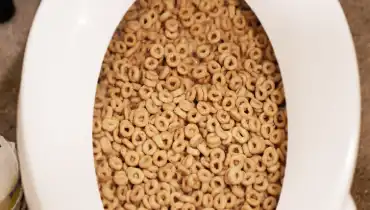This article underneath involving Think Twice Before Flushing Food Down Your Toilet is fairly stimulating. Don't overlook it.

Introduction
Many people are frequently confronted with the predicament of what to do with food waste, particularly when it concerns leftovers or scraps. One common inquiry that arises is whether it's all right to flush food down the toilet. In this post, we'll delve into the reasons that people could think about purging food, the repercussions of doing so, and different techniques for appropriate disposal.
Reasons that people may take into consideration flushing food
Absence of recognition
Some individuals may not recognize the potential damage triggered by purging food down the bathroom. They might mistakenly believe that it's a harmless method.
Comfort
Purging food down the commode might seem like a fast and simple remedy to taking care of undesirable scraps, particularly when there's no nearby trash bin offered.
Negligence
In some cases, people might simply choose to flush food out of large idleness, without taking into consideration the repercussions of their activities.
Consequences of flushing food down the bathroom
Environmental impact
Food waste that winds up in rivers can contribute to contamination and harm marine ecological communities. Additionally, the water made use of to flush food can stress water sources.
Plumbing concerns
Flushing food can lead to clogged up pipes and drains, triggering pricey plumbing repairs and troubles.
Types of food that must not be flushed
Fibrous foods
Foods with coarse textures such as celery or corn husks can obtain entangled in pipes and trigger obstructions.
Starchy foods
Starchy foods like pasta and rice can absorb water and swell, resulting in clogs in pipes.
Oils and fats
Greasy foods like bacon or cooking oils ought to never ever be purged down the toilet as they can strengthen and cause obstructions.
Correct disposal methods for food waste
Making use of a garbage disposal
For homes geared up with waste disposal unit, food scraps can be ground up and flushed through the plumbing system. However, not all foods are suitable for disposal in this fashion.
Recycling
Specific food packaging materials can be reused, minimizing waste and minimizing ecological effect.
Composting
Composting is an environment-friendly way to take care of food waste. Organic products can be composted and used to enhance soil for horticulture.
The importance of appropriate waste management
Decreasing environmental damage
Correct waste management techniques, such as composting and recycling, aid reduce contamination and maintain natural resources for future generations.
Securing pipes systems
By staying clear of the method of flushing food down the bathroom, home owners can prevent expensive pipes repair services and preserve the integrity of their pipes systems.
Verdict
Finally, while it might be tempting to flush food down the bathroom for benefit, it is necessary to recognize the possible consequences of this activity. By taking on correct waste monitoring techniques and disposing of food waste sensibly, people can add to much healthier plumbing systems and a cleaner atmosphere for all.
FLUSH FOOD DOWN THE TOILET?
FLUSHING FOOD CAN CAUSE BLOCKED DRAINS IN YOUR HOME
All of the plumbing fixtures in your home are connected to the same sewer pipe outside of your home. This outdoor sewer pipe is responsible for transporting all the wastewater from your home to the Council sewer mains. Even small pieces of food that go down the kitchen sink can cause problems for your sewer. It should therefore be obvious that flushing larger bits of food, such as meat, risks a clog in either the toilet itself or the sewer pipes. Flushing greasy food is even more problematic because oil coagulates when it cools, coating the interior lining of your pipes.
THE TOILET IS NOT A BIN
Food isn’t the only thing that people shouldn’t be flushing down the toilet. People use the toilet to dispose of all kinds of things such as tampons, makeup wipes, dental floss, kitty litter and even underwear. Water goes to great lengths to educate residents about the high costs and stress placed on wastewater treatment systems simply from people flushing the wrong stuff down the toilet. It costs taxpayers millions of dollars each year, and homeowners thousands in blocked drain repairs.
FLUSHING FOOD IS A WASTE OF WATER
Flushing food is a waste of our most precious resource - water. In June this year Level 1 water restrictions were introduced to protect water supply from drought conditions. Much of New South Wales continues to be affected by prolonged drought with recent figures revealing up to 97 per cent of the state remains in drought. Depending on whether you have a single or dual flush toilet, every single flush uses between five and 11 litres of water. In the current climate this is a huge amount of water to be wasting on flushing food that should be placed in the bin (or better yet, the compost).
https://www.jabplumbingsolutions.com.au/blog/can-you-flush-food-down-the-toilet

As a serious reader about , I thought sharing that piece of content was a great idea. For those who appreciated our page if you please remember to share it. We cherish your readership.
Schedule